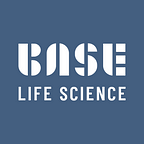Best Practices When Implementing a Global Transparency Program
Each region across the globe has its own regional or local legal requirements regarding transparency reporting for healthcare professionals (HCPs). For example, the U.S. has the Sunshine Act, France has the Loi Bertrand and Europe has additional association needs that are not purely legal, such as EFPIA or MedTech.
Keeping up with these changing requirements may seem like a tremendous task when implementing a global transparency program.
Along with these changing requirements, an organization must evaluate its stage of commercial development and the scale of medical/commercial activities that must be reported. This can be addressed by defining a transparency roadmap along with relevant processes and systems.
One of the biggest challenges, when reporting transactions, is managing data. More specifically, various data sources, poor structure and quality can lead to significant verification and validation efforts.
Although setting up a global transparency program may seem complex because of the changing regulations and the data required to generate reports, it does not have to be. By implementing a few simple best practices and choosing the right partners to support them in their journey, organizations can set up a compliant global program.
Business process best practices
The highly regulated healthcare industry relies on processes and standard operating procedures (SOPs) to define its operations.
Setting up a global transparency program or updating an existing one brings an opportunity for process optimization. This optimization starts by defining new processes or by simply updating existing ones, depending on the gap between the new transparency state versus the current one. Once these are approved, the organization needs to define and create the proper operation setup which will allow for teams to work effectively when following these procedures.
Any new or updated process change requires robust organizational change management to ensure that they are understood and adopted. By identifying the various local operating markets and functions which are impacted by the process changes, the organization can then define a robust stakeholder management and communication plan. This will ensure that all stakeholders are informed and involved in the upcoming changes.
Finally, proper training needs to be conducted. Both on the changes to the processes as well as the changes in the systems impacted by the transparency reporting or any related systems that are being used for transparency reporting purposes.
If followed, these business process best practices will allow for scalability and easier expansion of a transparency reporting program to a global level.
Technical enablement
Alongside the business practices, another set of guidances applies to the technical part of the implementation. Having the right interfaces in place and testing capabilities are critical aspects to any IT system implementation. Data management and quality are at the core of a successful implementation.
There are a few simple steps that can help organizations to ensure that the data can be easily used with limited remediation required. The first step is to perform thorough data verification by identifying the relevant data sources and defining the necessary data structure. The second step consists of mapping the various data sources used in the report generation. By then comparing the available data with the reporting jurisdiction requirements, the organization can identify and remediate gaps in the data gathering process.
Aggregating all the findings in the verification and mapping process can lead to identifying opportunities for changes in the data capturing process and updates to the IT architecture. Overall, by improving all aspects of data, the organization will be more efficient and can reduce some of the burden on their compliance, legal or medical functions. They can spend more time on activities that truly bring value to the company. Furthermore, the organization can reduce the compliance risks such as missing reportable transactions or incomplete data in transparency reporting.
Setting up a global transparency program may seem like a tremendous task for an organization, but it does not need to be. By implementing a few key business best practices — such as process optimization, change management and training along with robust data management — implementing a global transparency program can become a reality.
About BASE life science
BASE life science is an innovative and forward-thinking technology, product and service consultancy specialized in creating real business value from digital platforms and data. Our experienced teams are ready to help optimize your technology and business processes within Customer Engagement, Quality, Regulatory, Compliance and Clinical data management.
BASE currently operates from our offices located in Denmark, Switzerland, Spain, Italy, United Kingdom and Germany from where we assist customers across the globe. Fueled by our dedicated teams’ hard work and efforts, BASE has been cemented as a reliable advisor in the life science industry, striving for continuous excellence to remain an entrusted partner that can bring our customers visions successfully to life.
About the author — Hervé Courthion, Senior Consultant, Customer Engagement
Hervé is a dedicated and curious customer engagement consultant, driven by his passion for technology and the healthcare industry. As an analytical thinker with a strong knowledge of the entire pharma value chain, Hervé is an expert in helping our customers create real business value and deliver results with his pragmatic approach.
